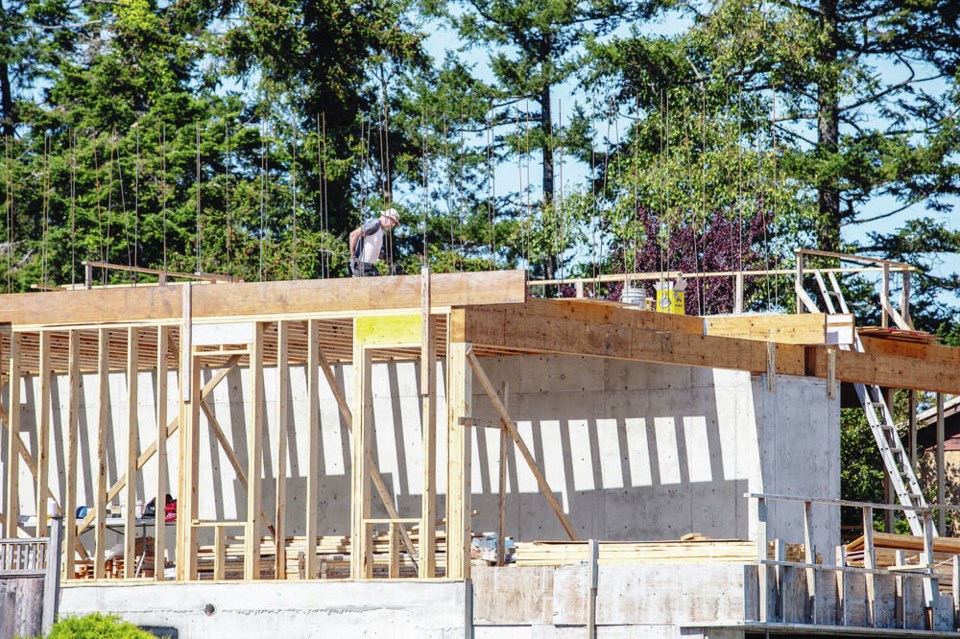A commentary by a retired 36-year union representative who led the B.C. Regional Council of Carpenters for eight years.
The May 3 article “B.C. skills plan targets changing economy” reported an increase in grants for short-term skills upgrading and the doubling of student loan maximums for eligible students and waiving tuition for former youth in care.
In other words, tinkering around the edges.
The B.C. Liberal government radically changed the apprenticeship system in 2003, closing 15 of 16 apprenticeship branch offices, firing all apprenticeship counsellors and introducing tuition fees for technical training.
When I did my carpentry apprenticeship (in school) training 48 years ago, it was four levels in each year of the four-year apprenticeship.
The only cost was books, which the union ordered in bulk and offered at cost, with no mark-up.
The cost today differs slightly per college; for instance, Northern Lights College in Fort St. John says the costs range between $2,500 to $3,000 per level for tuition, books and other fees for the seven-week per year carpentry program.
Yes, university tuition costs around $6,000 per year but that is full time, not a seven-week program.
The change to apprenticeship self-registration and self-scheduling of technical training and the introduction of tuition certainly led to a drop-off in technical training and apprenticeship completions after apprenticeship counsellors were fired and assigned technical training was eliminated.
Other changes that would weaken the longstanding apprenticeship model, by offering to split a craft such as carpentry into two semi-skilled occupations of carpenter framer and carpenter formworker, were championed by non-union groups.
They failed to attract prospective applicants, who realized those credentials would not be recognized across the country under the national Red Seal program, and realized that limiting their skills would make them less employable and less able to attain higher wage levels.
A B.C. Chamber of Commerce document, Improving Apprenticeship Completion Rates 2021, states that this province remains distinct from other provinces in its approach to apprenticeship training.
“The 2003 B.C. model was distinguished by the deregulation of skilled trades and modularized training and certification. The impacts have come into focus just as growth in the demand for skilled trades and the need to replace an aging workforce approach peak levels.”
The report had other troubling findings:
• Overall apprenticeship rates have declined compared to a decade ago and relative to other jurisdictions;
• Lower average rates of completion for trades that are compulsory in other jurisdictions suggest that the absence of compulsory trade certification in B.C. decreases the motivation for apprentices to complete;
• Significant increase in program registrations have been achieved, but can be attributed to a small number of trades and a subset of newly established sub-trades which do not afford workers the same degree of mobility as nationally recognized Red Seal trades. Many of the newly established sub-trades introduced to meet industry demands have been eliminated due to low enrolment and poor training outcomes;
• Certification in Red Seal trades has declined, from 84 per cent in the 2001 to 2004 period to 65 per cent in the 2011 to 2014 period. This decline is greater than that experienced in the rest of Canada and suggests fewer tradespeople in B.C. are completing the full Red Seal certification since implementation. This trend has continued through to 2017 with a modest increase in completion rates while continuing to lag behind the rest of Canada; and
• Trade deregulation and modularized training and certification has resulted in a ‘trade shift’ toward a higher concentration of registrations and completions in a smaller number of trades. This ‘trade shift’ is on opposite ends of the pay scale, with highly paid industrial trades on one end and service sector occupations with lesser qualifications on the other trades.
The report says that “the increased incidence of workplace injury suggests that the Industry Training Authority, under the 2003 model, has been unable to ensure the quality of safety training programs.
“The injury rate for B.C. tradespeople is nearly four times that of their counterparts in Ontario,” the report said.
“The continued ‘narrowing and shallowing’ of trades training system carries a major risk,” it said. “If economic conditions change or the types of skills in demand change in B.C., the workforce risks not having the depth and breadth of skills, both individually and collectively, required to adapt.”
The report is not completely negative, mentioning recent changes to B.C.’s system.
“Training times for many trades have increased to be in line with those of other jurisdictions, and smaller apprenticeship programs created under the 2003 system have been eliminated in favour of returning to the original apprenticeship format (e.g. reinstating the full scope carpenter trade apprenticeship instead of dividing it into two sub-trades).”
This statement is not completely accurate as the full scope carpentry apprenticeship program was still available during a time when two semi-skilled programs, a carpentry framer program and a carpenter formworker program, were offered.
B.C. needs to designate more trades as compulsory and eliminate tuition and other fees and costs to develop a highly skilled workforce.
And yes, that may produce an environment where those skilled workers have a greater ability to command better wages to buy a house that they may have built, but can’t afford!
Anyone finding it difficult to find highly skilled tradespeople these days?
>>> To comment on this article, write a letter to the editor: [email protected]



